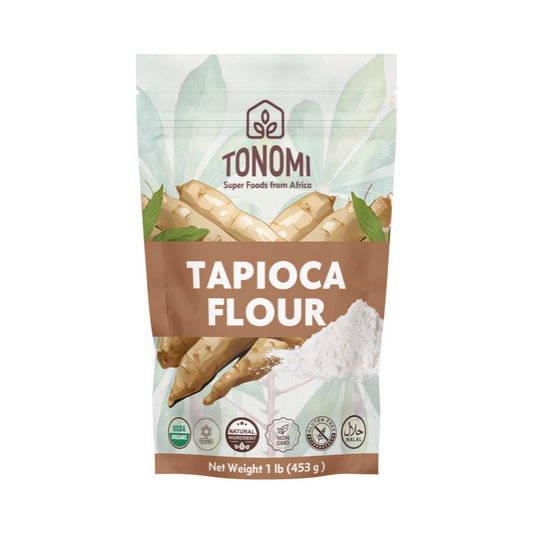Understanding the distinction between "wheat-free" and "gluten-free" is essential for anyone navigating dietary restrictions, whether due to allergies, intolerances, or health conditions such as celiac disease. While these terms are often used interchangeably, they refer to different dietary needs and restrictions. This article will explore the nuances between wheat-free and gluten-free diets, their implications for health, and how to identify suitable foods and products for each.
What Does Wheat-Free Mean?
A wheat-free diet eliminates all forms of wheat from the diet. This includes avoiding not only common wheat (Triticum aestivum) but also related species and derivatives, such as:
- Spelt
- Kamut
- Emmer
- Einkorn
- Durum wheat
Reasons for a Wheat-Free Diet
People may adopt a wheat-free diet for various reasons:
- Wheat Allergy: An immune response to proteins found in wheat, leading to symptoms like hives, digestive issues, and respiratory problems.
- Non-Celiac Wheat Sensitivity (NCWS): A condition where individuals experience symptoms similar to celiac disease when consuming wheat, but without the autoimmune response or intestinal damage.
- Digestive Issues: Some people may find that wheat causes bloating, gas, or other digestive discomforts, prompting them to avoid it.
What Does Gluten-Free Mean?
A gluten-free diet excludes all sources of gluten, a protein found in wheat, barley, and rye. This means avoiding:
- Wheat (including all varieties mentioned above)
- Barley
- Rye
- Triticale (a cross between wheat and rye)
Reasons for a Gluten-Free Diet
A gluten-free diet is essential for individuals with:
- Celiac Disease: An autoimmune disorder where the ingestion of gluten leads to damage in the small intestine.
- Non-Celiac Gluten Sensitivity (NCGS): A condition where individuals experience symptoms similar to celiac disease upon consuming gluten, but without the autoimmune response or intestinal damage.
- Wheat Allergy: Although not directly related to gluten, individuals with a wheat allergy also need to avoid wheat, which coincides with many gluten-containing foods.
Key Differences Between Wheat-Free and Gluten-Free
Scope of Restriction
- Wheat-Free: Only avoids wheat and its derivatives. Products containing barley, rye, and oats (if not cross-contaminated with wheat) are permissible.
- Gluten-Free: Avoids all sources of gluten, including wheat, barley, rye, and their derivatives.
Suitable Grains and Substitutes
-
Wheat-Free:
- May include: Barley, rye, oats (if not contaminated with wheat), rice, corn, quinoa, millet, sorghum, buckwheat, and amaranth.
- Requires vigilance to avoid wheat in processed foods and cross-contamination.
-
Gluten-Free:
- Excludes: Wheat, barley, rye, and any cross-contaminated oats.
- Includes: Naturally gluten-free grains like rice, corn, quinoa, millet, sorghum, buckwheat, amaranth, and certified gluten-free oats.
Labeling and Food Safety
- Wheat-Free: Look for products labeled as "wheat-free." However, these products may still contain gluten from other sources like barley or rye.
- Gluten-Free: Products must be labeled as "gluten-free," ensuring they contain less than 20 parts per million (ppm) of gluten, as regulated by the FDA. This labeling guarantees the absence of wheat, barley, rye, and cross-contaminated oats.
Navigating Wheat-Free and Gluten-Free Diets
Wheat-Free Diet Tips
- Read Labels: Look for wheat in ingredient lists and allergen statements.
- Identify Hidden Sources: Be aware of wheat derivatives in sauces, dressings, and processed foods.
- Alternative Grains: Incorporate barley, rye, oats, and other non-wheat grains.
Gluten-Free Diet Tips
- Certified Products: Choose products labeled as "gluten-free."
- Avoid Cross-Contamination: Be cautious in kitchens and restaurants where gluten-containing and gluten-free foods might mix.
- Alternative Grains: Utilize naturally gluten-free grains like quinoa, rice, and certified gluten-free oats.
Health Implications
Nutritional Considerations
- Wheat-Free: Individuals may need to ensure they get enough fiber and nutrients typically found in wheat products, such as B vitamins and iron.
- Gluten-Free: A strict gluten-free diet can sometimes lead to deficiencies in fiber, iron, calcium, and B vitamins. It's essential to find alternative sources of these nutrients and consider fortified products.
Digestive Health
- Wheat-Free: Avoiding wheat can alleviate symptoms related to wheat allergies or sensitivities but may not address issues related to gluten from other grains.
- Gluten-Free: Critical for those with celiac disease and NCGS to prevent symptoms and potential long-term complications such as nutrient malabsorption and intestinal damage.
Common Misconceptions
- Wheat-Free Equals Gluten-Free: Not all wheat-free products are gluten-free since they may contain other gluten-containing grains.
- Gluten-Free Equals Healthier: Gluten-free products are not inherently healthier and can be high in sugars and fats. Always check nutritional information.
Conclusion
While both wheat-free and gluten-free diets cater to specific health needs, they are not synonymous. A wheat-free diet excludes all forms of wheat but may still include other gluten-containing grains. In contrast, a gluten-free diet eliminates all sources of gluten, including wheat, barley, and rye. Understanding these distinctions is crucial for making informed dietary choices and managing health conditions effectively.
Whether navigating a wheat allergy, non-celiac wheat sensitivity, celiac disease, or gluten sensitivity, being vigilant about food choices and understanding labeling is essential for maintaining health and well-being. By incorporating suitable grains and being aware of hidden sources of wheat and gluten, individuals can enjoy a varied and nutritious diet while adhering to their dietary restrictions.





